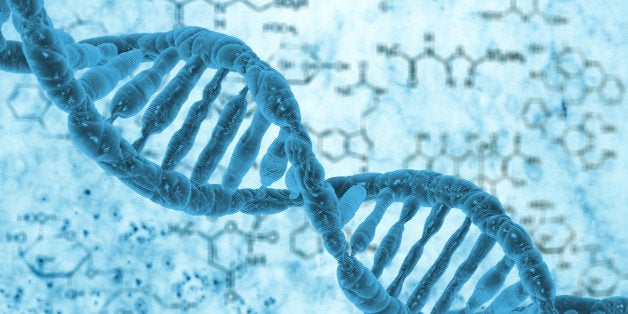
Recent events have highlighted advancements made in recovering DNA from crime scenes to aid in criminal investigations. But while science and technology can drive DNA forensics forward, policy must pave the path ahead.
A major breakthrough in the investigation of last months's horrific quadruple homicide in the Woodley Park neighborhood of the District of Columbia occurred when DNA evidence was recovered from a pizza crust found at the scene of the crime. The ability of Metropolitan Police to connect this DNA sample to a named suspect indicates that it matched a reference sample from a prior convict or arrestee stored in a local, state, or federal DNA database. The system worked; the manhunt intensified and the suspect has been arrested.
But what would have happened if the DNA sample had not returned a match from the database? Might the "genetic witness" have offered other clues to help crack the case? Technologically, the answer is yes. Familial searching, for example, can identify close relatives in the database to narrow the search, and next-generation sequencing can be used to discern physical and medical traits of the suspect.
But the extent to which the full spectrum of DNA technology can be employed in a criminal investigation is more heavily influenced by policy and legal considerations than technological constraints. As the nation's attention is captivated by this current tragedy, we must also renew our focus on the important policy decisions that will dictate how the field of DNA forensics will evolve in the future.
First, we must define how and from whom reference DNA samples are collected. All 50 states and the federal government require the collection of DNA from certain convicted offenders for inclusion in state and federal databases. Most states have extended this practice to arrestees, and the Supreme Court's majority decision in Maryland v. King stated that "analyzing a cheek swab of the arrestee's DNA is, like fingerprinting and photographing, a legitimate police booking procedure that is reasonable under the Fourth Amendment." Some countries, such as the United Arab Emirates, are planning on entering their entire populations into a national DNA database, while others, such as Portugal and Uzbekistan, have backtracked on these plans due to privacy and financial concerns. Policymakers must therefore balance the forensic benefits of a larger, more comprehensive database with other legitimate concerns related to constitutionality, privacy, and cost.
Second, we must consider the extent to which we can extract information from DNA samples stored in a database or collected from the scene of a crime. Current DNA profiling techniques focus on mapping the location of genetic markers within the DNA, serving as a type of genetic fingerprint or barcode. However, technologies related to the sequencing of the genome itself, known as "next-generation sequencing," can deliver meaningful results even without a database match by presenting information on physiological traits, biogeographic ancestry and health characteristics. Next-generation sequencing has been used extensively in the medical and academic communities, but its forensic applications to date have been limited and pose serious privacy concerns. Consequently, policymakers must establish clear guidelines related to how and to what end genetic material can be tested.
Finally, we must manage the infrastructure necessary to support the collection, storage and matching of DNA samples. Since 2006, Congress has appropriated nearly one billion dollars to support state and local crime labs as part of the DNA Backlog Reduction Program. But if more advanced methods of DNA testing -- such as next-generation sequencing -- are used in the future, then current samples would need to be re-tested and the databases would need to be reconfigured to manage the additional information. In order for this to happen, the original reference and case samples of DNA would also need to be preserved for future testing. In this sense, policymakers must support the creation of the proper technological and legal systems to ensure the relevance of today's DNA samples for tomorrow's unsolved mysteries.
The scientific possibilities of DNA forensics abound, but the limits of its applicability rest squarely in the world of policy. While some policymakers may be tempted to treat these capabilities as a panacea for criminal investigations, the evolution of DNA forensics may also represent a Pandora's box of ethical, privacy, legal and financial concerns that require deep consideration.
Today, we applaud the proper application of DNA forensics for its role in identifying the suspect of the quadruple homicide in Woodley Park. Concurrently, we must also affirm the importance of the many policy decisions yet to be made that will define the manner in which DNA forensics will be employed in the cases of tomorrow.